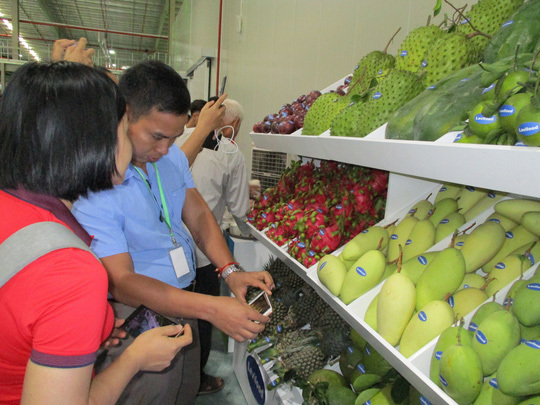Deputy Minister of Agriculture and Rural Development Tran Thanh Nam said China has tightened cross-border trade and even prevented imports at some border gates.

Therefore, exporting products through official channels is the only way to penetrate the Chinese market. In order to do this, Vietnam’s products have to meet requirements set by the importer on quality and traceability.
The requirements set by Chinese agencies are similar to those of choosy markets such as the US, Japan, Australia and Canada.
Vietnam’s enterprises won’t give up the market despite stricter requirements. Nam said China is a large market with 1.4 billion consumers and increasingly high demand for farm and seafood produce. It is near and similar in consumer taste.
According to Dao Viet Anh, Trade Counsellor to China, in 2018, Vietnam-China two-way trade turnover hit $147.8 billion, an increase of 21.2 percent over 2017.
China has been the biggest trade partner of Vietnam in the last 15 years. Vietnam is China’s biggest trade partner in ASEAN and the eighth largest in the world.
|
In 2018, the two-way Vietnam-China trade turnover of this category of products hit $12 billion, of which Vietnam exported $8.3 billion. In the same year, China imported $79.7 billion worth of farm produce. and the figure keeps increasing. |
Farm and seafood produce are major export items which help Vietnam ease the trade deficit with China.
In 2018, the two-way Vietnam-China trade turnover of this category of products hit $12 billion, of which Vietnam exported $8.3 billion. In the same year, China imported $79.7 billion worth of farm produce. and the figure keeps increasing.
The biggest farm export items include vegetables & fruits ($2.7 billion), tea ($19.6 million) and coffee ($19.6 million). A lot of Vietnamese farm produce brands have become well known in the Chinese market, including Hoang Hau dragon fruit, Trung Nguyen Coffee, Duc Thanh dried fruit and Soc Trang pia cake.
Overcoming short-term difficulties
Nguyen Quoc Toan, Director of Processing and Development of Agricultural Products Market, stressed that China has always been the traditional farm produce market for Vietnam and it will still be a market in the future.
Therefore, Vietnamese enterprises have to be aware of the importance of the Chinese market. They need to understand that China'new rules are just simply a necessary adjustment in the context of global integration.
Vietnam’s farm exports to China decreased in Q1 2019, but bounced back later in April when Vietnam’s enterprises became more accustomed to the new requirements. In Luc Ngan litchi granary in Bac Giang province, for example, 100 percent growing areas have been granted codes.
Le Ha

Demand for container shipments in Vietnam surges amid US-China trade war
The number of container equivalents of goods shipped in and out of Vietnam annually may reach 23 million by 2025, up 64% in 2019.

Production shift from China to Vietnam speeds up in trade war
Vietnam is an ideal destination for foreign investors, including Chinese, despite China’s efforts to prevent capital flowing out of the country.
 Since June, Vietnam’s farm and seafood produce have had through official channels to enter China and meet stricter requirements. Despite this, China still remains Vietnam’s major export market.
Since June, Vietnam’s farm and seafood produce have had through official channels to enter China and meet stricter requirements. Despite this, China still remains Vietnam’s major export market.